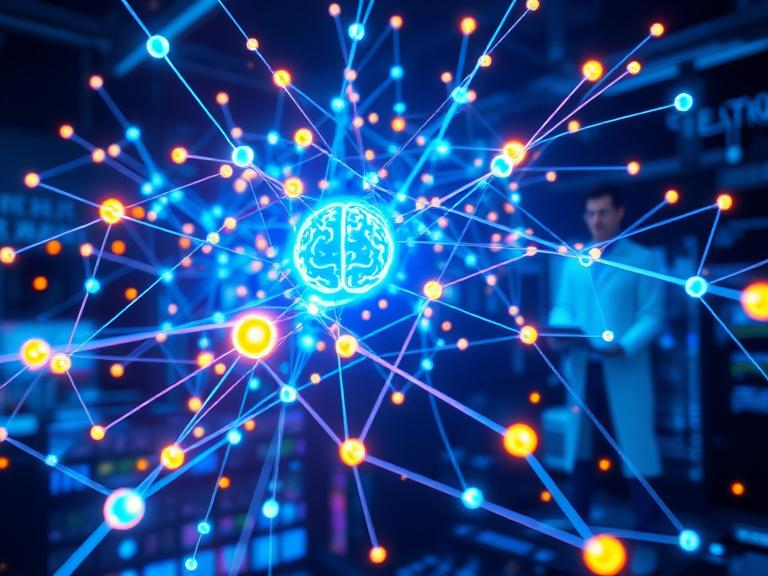What is Neural Network?

A neural network is a mechanism due to which artificial intelligence, also known as AI, learns to process data just like any other human brain will. It is safe to say thats make an integrated layered structure of neurons and nodes to transfer the data.
A network of adaptive computer systems is developed which can learn from their errors and take corrective measures to avoid them simultaneously. Due to this, artificial NNs are able to crack complex problems, patterns, and trends, recognize faces, summarize documents, and perform various such tasks efficiently.
What is the history of neural networks?
The origin of neural-networks can be dated back to the year 1943 when a mathematical paper was published that described how the human brain might be working. Soon after the paper was published, it caught the attention of the computer scientists to make a it for the computers as well, based on the NN ( Neural-Network) of the human brain between the years 1950 to 1960.
However, the plan was dropped due to the copious amount of complex design till the year 1980s, when it was picked again, and by the 1990s, a layout was developed that became the backbone of today’s era of Artificial intelligency.
What is a Neural network?
As the name suggests, an artificial neural-network is developed just like the human brain neural-network to record and translate complex data for humans to understand and process accordingly. Just like the human brain, artificial neural-networks are connected with a collection of a large number of processing units, also known as nodes.
These artificial nodes transfer the data with the help of an electrical impulse that runs through them just like human brain neurons. Due to these advanced abilities, they are used in deep learning, which is a part of machine learning, in order to perform various tasks without the intervention of human help.
For instance, it can identify objects from the images and categorize them accordingly, which has never been seen before. Now, let us understand a little bit about what is needed to make a neural-network work.
How does an artificial neural network or a neural network work?

A neural network works with a wide range of nodes that are further separated into three different layers for efficient processing and transferring of the data. The three different layers are mentioned below:
1. An input layer
2. A hidden layer
3. An output layer
The above-mentioned layers are the minimal requirement for the neural-network to work properly. In every node, minimum of one hidden layer is required, but if the design requirement needs more than one hidden layer, then also it can be added in addition to the input layer and the output layer.
In layman’s terms, all three layers are enabled with a set of criteria that they need to satisfy in order to move forward or transfer the data to the next layer. For instance, each node is equipped with a certain mathematical formula in which each variable contains a different aspect. If the results do not satisfy the required set point, then the data stays in that particular node, and if it does, then the data is transferred to the next layer of the neural network for further processing.
What are the different types of neural networks?
The number of nodes and layers a neural-network can make is endless, as such there are numerous ways a node can correspond with each other. Thus to tell an exact number is not worth it however we can sort them out into few categories.
Few categories of neural network are as follow:
● Deep neural-network – hidden layers are more than one.
● Shallow neural-network – hidden layer is only one.
Another factor that one should consider is that shallow neural networks require less processing power and can work faster while on the other hand deep neural networks require more processing power as such they perform more complex tasks.
Below, there are some types of neural networks that are used in present days:
● Feed forward neural networks – information is passed through nodes towards the forward node.
● Perceptron neural networks – simple and shallow networks that have input layer and output layer.
● Multilayer perceptron neural networks – includes various complexity and hidden layers to the perceptron neural networks.
● Modular neural networks – combines more than one node to achieve output.
● Liquid state machine neural networks – ability to connect with different nodes randomly.
● Recurrent neural networks – has a feature to go backward and allow the output of previous nodes to have an impact on the input of existing nodes.
● Residual neural networks – identify mapping process is used to move the data ahead, in order to combine the output of previous layers with the current layers output.
● Radial basis function neural network – designated mathematical function is provided known as radial basis function.
Application of Neural networks that are used in the present days are as follow:
● Image recognition – it can be used for facial recognition, image and video analysis and medical image classification.
● Financial prediction – used to predict the trend or pattern of various stock market stocks.
● Autonomous vehicles – self driving vehicles such as four wheel vehicles, drones, cargo ships.
● Various other sectors such as signature verification, social media, weather forecasting, aerospace, electrical load and energy demand forecasting, targeted marketing, process and quality control, defence, and healthcare.
Conclusion:
Neural networks are the game changers in the field of artificial intelligence as such it is able to do wonders and making human life little bit easier by performing the tedious and complex work with an ease.
All it need is a massive data storage abilities in order to store the data for reference and perform various jobs that require human intervention without any hassle. The need of improvement is still there as such there are still many gray areas in the field where more advancement is required. Thus it is safe to say that the future of artificial intelligence looks brighter in the near future.



